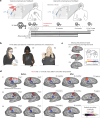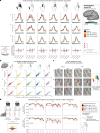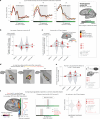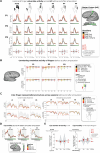Stable cortical body maps before and after arm amputation
- PMID: 40841477
- PMCID: PMC12477700
- DOI: 10.1038/s41593-025-02037-7
Stable cortical body maps before and after arm amputation
Abstract
The adult brain's capacity for cortical reorganization remains debated. Using longitudinal neuroimaging in three adults, followed before and up to 5 years after arm amputation, we compared cortical activity elicited by movement of the hand (before amputation) versus phantom hand (after amputation) and lips (before and after amputation). We observed stable cortical representations of both hand and lips in primary sensorimotor regions. By directly quantifying activity changes across amputation, we demonstrate that amputation does not trigger large-scale cortical reorganization.
© 2025. The Author(s).
Conflict of interest statement
Competing interests: The authors declare no competing interests.
Figures












Update of
-
Stable Cortical Body Maps Before and After Arm Amputation.bioRxiv [Preprint]. 2025 Feb 4:2023.12.13.571314. doi: 10.1101/2023.12.13.571314. bioRxiv. 2025. Update in: Nat Neurosci. 2025 Oct;28(10):2015-2021. doi: 10.1038/s41593-025-02037-7. PMID: 38168448 Free PMC article. Updated. Preprint.
References
MeSH terms
Grants and funding
- F32MH139145/U.S. Department of Health & Human Services | National Institutes of Health (NIH)
- MC_UU_00030/10/RCUK | Medical Research Council (MRC)
- F32 MH139145/MH/NIMH NIH HHS/United States
- ZIAMH 002893/U.S. Department of Health & Human Services | NIH | National Institute of Mental Health (NIMH)
- WT_/Wellcome Trust/United Kingdom
LinkOut - more resources
Full Text Sources

